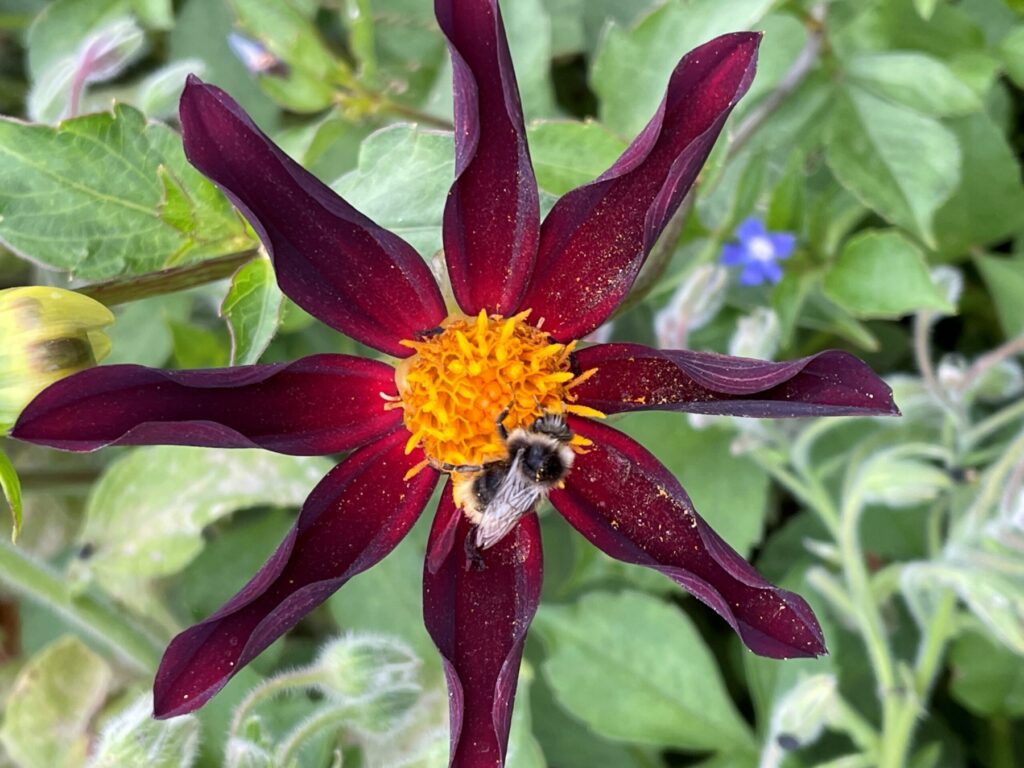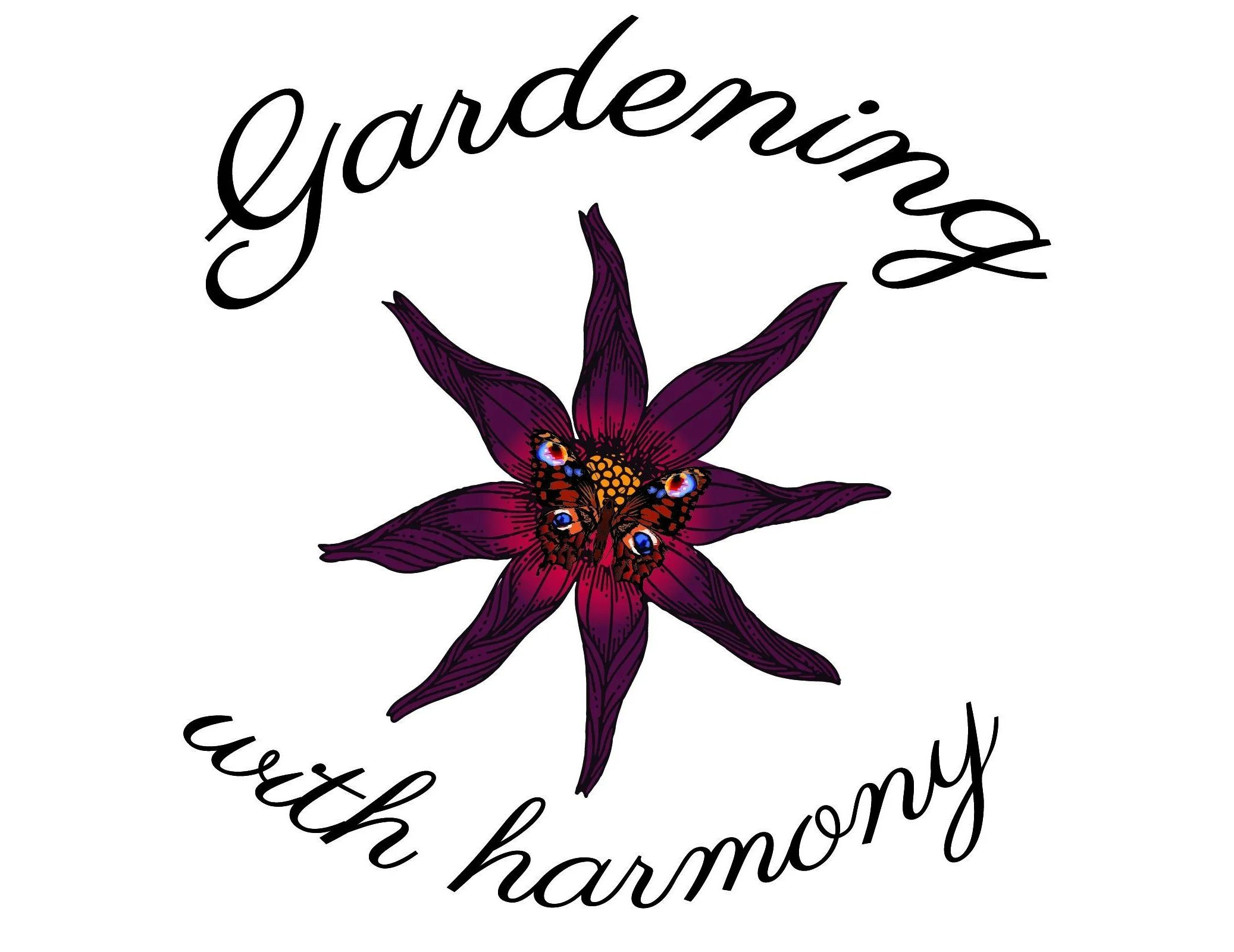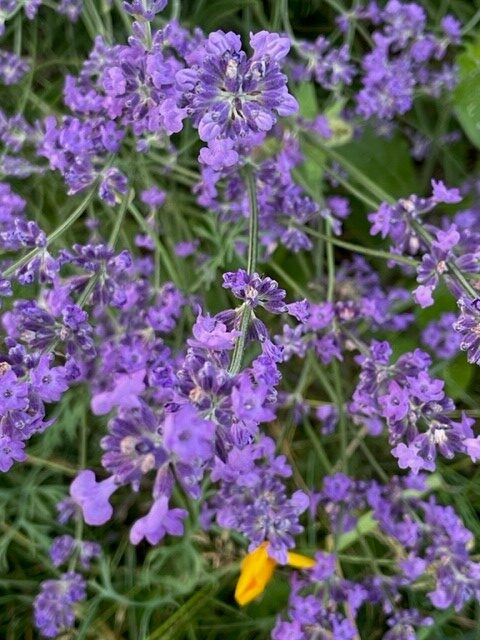Unsurprisingly beautiful lavender is one of the most loved flowering plants in the world. Treasured for its fantastic fragrance, beautiful flowers, and calming properties.
I was looking at one of the clumps of beautiful lavender in my garden and admiring the beautiful flowers. Also, I noticed the abundance of bees, buzzing away merrily on the blooms.
Next, I thought it would be interesting to gaze at the flowers for ten minutes and see how many pollinators came to visit these beautiful blooms.
Read on for the results of my relaxing ten minutes with the lavenders
Bumble bees and honey bees

Lavender flowers are a great natural food source for bees. Because the flowers contain both pollen and nectar, the bees make a bee-line for the blooms.
Also, lavender has antibacterial antifungal properties, which can help to protect bees from infections.
I have read that bees appreciate the scent of lavender, as it is known to be soothing and calming for them. Likewise, we also benefit from the scent for the same reasons.
Furthermore, bees are highly attracted to the colour of the flowers as the blooms are mostly lilac or light purple, lavender in fact!
All in all, a fantastic plant for the bees. I observed a great amount of bumble bees, some honey bees and two mason bees during my ten minutes.
I always think that the sound of the bees buzzing is lovely to hear and it is one of the sounds of summer, lazy days and wall to wall sunshine, we hope.
The beating of bee’s wings creates a vibration in the wind and that vibration creates the buzzing sound we hear. Accordingly, the sound of the buzz depends on how rapidly the wings are beaten in the air.
The bigger a bee is, the slower its wings beat. The slower its wings beat, the lower the pitch of the buzzing will sound. Also, some bees vibrate and buzz to release pollen. I only found this out recently, and a fascinating fact it is too I thought.
When bumblebees vibrate flowers to release pollen, the corresponding buzz is quite loud and can be heard from some distance away from the flowers.
Beautiful lavender for the butterflies

Next came some beautiful butterflies. A really useful sighting, as I take part in the yearly Big Butterfly Count. So great to know there are some to count when I allocate my fifteen minute slots for counting each day. Click here for details on this year’s count. https://bigbutterflycount.butterfly-conservation.org/
Also, you can click here for my previous post on the count Counting beautiful butterflies, gardeners can help
The beautiful lavender flowers provide butterflies with lots of surface area to find and eat nectar. Also, they are attracted to the beautiful smell of the plants.
Over my ten minutes, two gatekeepers arrived, some small whites and also three meadow browns. Finally, near to the end of the ten minutes, a beautiful comma landed on a bloom.
A beautiful sight, seeing so many butterflies in my garden. I often see a few red admirals, tortoiseshell and, my favourites, peacocks too.
So far, the counts have been quite good, with a large number of small and large white, and several meadow brown, comma and gatekeeper. Less peacock, red admiral, tortoiseshell and blue but hopefully they will appear in my garden at the times I choose for the counts, rather than ten minutes later!
Often, I will slot in another count when they arrive, so on these days I get to submit two or three counts. All valuable information for Butterfly Conservation and the survey.
Beetles and beautiful lavender

Next to appear was a red soldier beetle. Also called a bloodsucker, because of its colour. However, it is a completely harmless beetle.
Additionally, they are called soldier beetles because of the combinations of black-and-red markings they have, which are said to be reminiscent of a soldier’s uniform.
The adult beetles feed on aphids, which is fantastic news as there seem to be so many aphids this year. In addition, the larvae prey on ground-dwelling invertebrates, such as slugs and snails.
Clearly, this is fabulous news for a dahlia grower. March this way Red Soldier beetles and lay as many eggs as you can in my garden.
Fantastic biodiversity which helps to protect all my dahlias from those slimy creatures. Thanks beetles!
I have researched the pollinating beetles and have found that approximately a quarter of beetles in the UK are pollinators.
So, that is around 1,000 species. These include flower beetles, swollen-thigh beetles, pollen beetles and red soldier beetles.
Next to arrive was a lovely metallic green beetle with a coppery sheen in the sunshine. This beetle has many names. The Thick-legged Flower Beetle, the Swollen-thighed Beetle and the False Oil Beetle. Another useful pollinator.
Lavenders and hoverflies

Besides the bees and butterflies, I have hundreds of hoverflies in my garden this year.
The hoverflies are infrequent visitors to my clumps of lavender.
As most hoverflies have simple mouthparts with no tongue, they need flowers with easy to reach nectar and pollen. Therefore, lavender flowers are not ideal.
However, they visited the lavenders during my ten minutes and later on, could be seen on the achillea (yarrow) flowers which are nearby.
When taking part in the 30 Days Wild challenge this year I read up on hoverflies.
I found out that hoverflies fly hundreds of miles in a day and migrate from Mainland Europe to Britain in spring.
If you are interested in hoverflies, check out my earlier post. The fantastic wildness of magic week 3 . This post gives more information on these charming and useful pollinating insects.
Ten minutes with the beautiful lavender
Pollinators, such as bees, butterflies and other insects, play an essential role in pollinating flowers and crops. So, it was fantastic to see so many, on my ten minute flop down to gaze at the flowers.
First, I saw and heard, the bumble bees, honey bees and mason bees. I always think that the sounds of the bees, buzzing, is one of the best sounds of summer.
Next came the butterflies; gatekeepers, meadow browns, small whites and a comma. Beautiful butterflies and a joy to see.
Then came the hoverflies. Around ten of these were seen on the flowers.
Finally, the beetles; the red soldier, and the swollen-legged beetle. Vibrant colours on the lavender flowers.
Overall, a fascinating ten minutes spent, gazing at the beautiful lavender. And ten different pollinators, so that’s a ten-ten isn’t it!
I thoroughly enjoyed my ten minutes gazing at some of my lavenders. If you decide to watch your flowers, do let me know your findings. Would be fantastic to know which pollinators you see.
Some lavender health benefits
Lavender is a perennial plant that’s known for its health benefits. Indeed, it has been used for centuries for its calming and relaxing properties.
Consequently, lavender can also help to reduce anxiety and stress levels, aid relaxation and improve sleep quality.
An earlier post about gardening for anxiety can be read here Garden to empower, out the anxiety
I have scented candles and my favourite ones are lavender. The fragrance is lovely and so relaxing.
Usually, I will light candles in the winter months, and the scent of lavender always makes me think of the summer and flowers in my garden. The scent evokes memories of the past summer and also summers to come, so a real mood enhancer.
Also, lavender oil is a popular aromatherapy choice for sleep and relaxation.
I know from personal experience that using lavender spray at night can be helpful. The spray helped me to sleep when I suffered from stress and anxiety. My story can be read here Wonderful powers of a flower
Clearly, lavender is a fabulous plant to spend time with in the garden too.
If you do not have any lavender plants or need more, check out the link below for several options.
Click here for Thompson and Morgan lavender options
This blog is an affiliate to Thompson and Morgan. If you click on one of the links above, and make a purchase I may receive a commission, at no additional cost to you.
To see all my updates as they happen, please enter your email address below and press the subscribe button.



6 responses to “Some beautiful lavender, 10 minutes gazing, 10 fantastic pollinators”
Lavender is one of my favourite things. I started with two this year and they have been covered in bees. I agree that bees are one of the best sounds of summer. Thank you for another informative blog😊
Thank you for your lovely comments. Great you have lavenders and some happy bees too 😁
nice ! good read .
stay awesome and keep blogging
http://www.pomeranianpuppies.uk
Thank you so much for your lovely comment. I shall try my very best to remain awesome and I promise to keep blogging. 😍 In the middle of an allium blog at the moment, then more dahlias and one about the positivity of plants too. 😁
Came across your post on the WordPress feed and just wanted to send a friendly shout-out! Your content caught my attention, and I’m excited to dive into more of your engaging posts. Although I couldn’t locate the follow button (funny enough!), I’ll definitely bookmark your blog ! Rest assured, I’ll be on the lookout for your future posts.
Looking forward to embarking on this reading adventure with you!
Warm regards,
Thanks – TheDogGod pomeranianpuppies.uk
Hello, thanks for the comments, really appreciated. The follow (subscribe) buttons are at the end of each blog post and homepage as well. Would be great if you would like to subscribe. If you do, there will be another post being published later this morning.